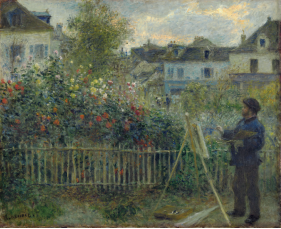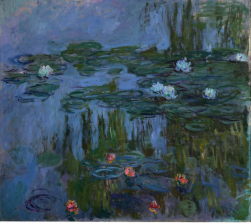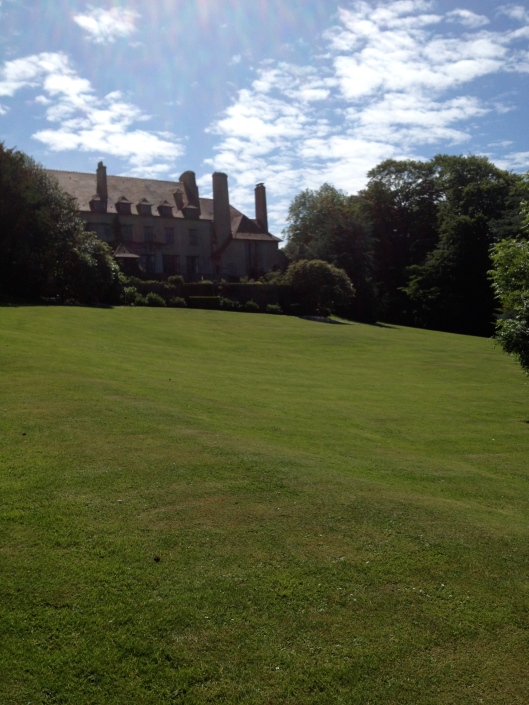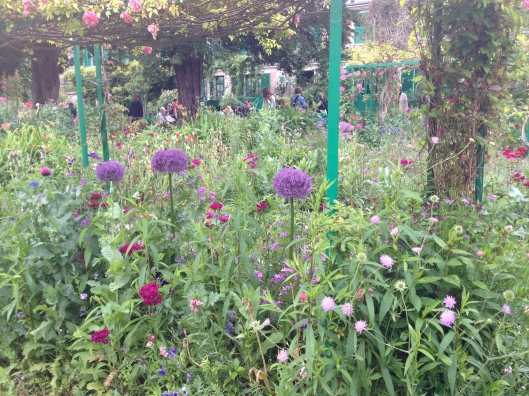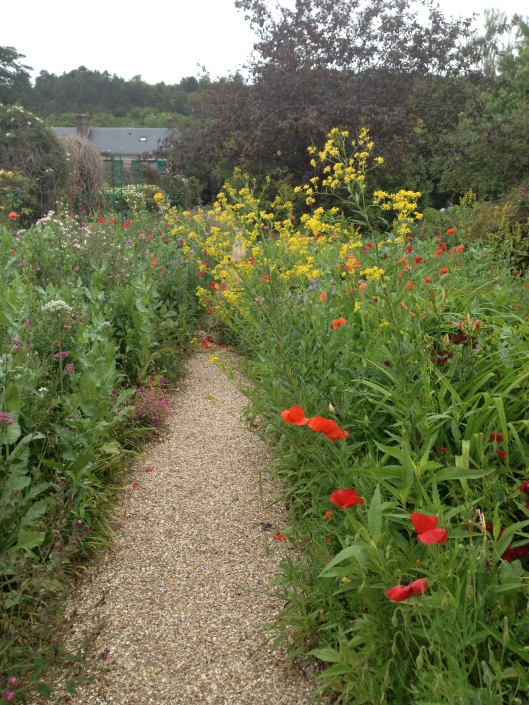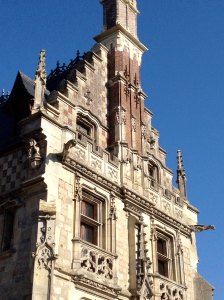This week was the feast day of St Fiacre, the patron saint of gardeners, in France and Ireland. As well as being the patron saint of gardeners, St Fiacre is the patron saint of our village in Normandy. Each year to mark the day, a special mass is held in the the ancient village chapel, and the residents gather for a meal together on the banks of the Seine. It’s a peaceful, slow-moving day before the bustle of the return to cities and schools and jobs in September. Here is the post I wrote about the day last year:
*****
Our Daily Bread
Bread is given three definitions in the Merriam-Webster Dictionary:
- a usually baked and leavened food made of a mixture whose basic constituent is flour or meal
- livelihood <earns his bread as a laborer>
- food, sustenance <our daily bread>
It is in search of bread under its first definition, a baked food made from flour, that we go as soon as we set foot on French soil. A truism, still true: bread never tastes quite like it does in France. For baguettes and croissants, an early morning run up the hill to our local artisanal bakery, Le Fournil de la Roselière in Sainte Opportune La Mare, does the trick. Although it stands alone in a quiet village, I’ve never seen it empty. Cars and trucks are constantly pulling in and owners whisking out with their daily bread in hand.
In a nearby village, La-Haye-de-Routot, is Normandy’s Bread Oven Museum. Every Sunday afternoon during the year, and every day in the summer, there are bread-making demonstrations.
The bread oven cottage is small and dark, and the bread oven is enormous, filling half of the cottage. It’s the kind of oven Grimm’s witch might have tried to push Hansel and Gretel into. Our children are sceptical, and they keep their distance. The boulanger is large and muscular and has a booming kind of voice. He starts us from the beginning, showing how he heats the oven and removes the coal and ash. It’s hard and hot work, requiring patience.
While he works Monsieur le Boulanger keeps up a comic patter with the audience, telling jokes about the clueless Parisians who take his bread-making courses. He only bakes in the traditional way, he tells us. Baking and keeping alive the art of traditional bread making is quite literally his livelihood.
He shows us how he shapes and decorates the bread, using a special tool for the detail. A pinch here, a prod there, a few seconds of extra work and people will pay three times more for a loaf, he chuckles.
While the bread is baking we go for a walk and return to the smell the baking bread. Now the children are keen, gathering close to the boulanger. Each has a go at helping to remove the bread. The paddle is carefully inserted under a few loaves and then the bread is pulled out with a fast, powerful tug.
Afterwards the fresh bread is sold. We leave with the warm loaves nestled in their white bags, ready for the evening meal.
With most meals in France we eat bread, freshly made and often hot: daily sustenance. One Saturday evening there is a mass in the village chapel, to honour the feast day of the village’s patron saint, St Fiacre. He probably started off as Fiachra, an Irishman, who travelled to France and built a hospice for travelers. Legend has it that St Fiacre furrowed a great garden with his staff. He is the patron saint of gardeners and taxi drivers. This seems fitting for our village with its beautiful cottage gardens, and I like the anomalous conflagration of rural and urban. It’s the story of our lives.
We arrive at the chapel just as mass is starting and are invited to sit in the only free seats, uncomfortable and ancient wooden pews at the front. Next to us is an unexplained heap of warm brioches. Brioche is made in a similar way to bread, but is enriched with egg and butter. It was often used as blessed bread in French churches, and was sold at market in the butter centres of northern France.
The mass is long and the chapel is full. We are hungry and the brioches smell so good. Finally as mass is ending, the priest and the mayor come forwards. The priest blesses the special St Fiacre brioches, sprinkling them with holy water: bread of life. The mayor invites the congregation for a glass of sparkling wine in the mairie, and the brioches are distributed. In the morning for breakfast, is the glistening golden brioche all the more delicious for having been blessed?

